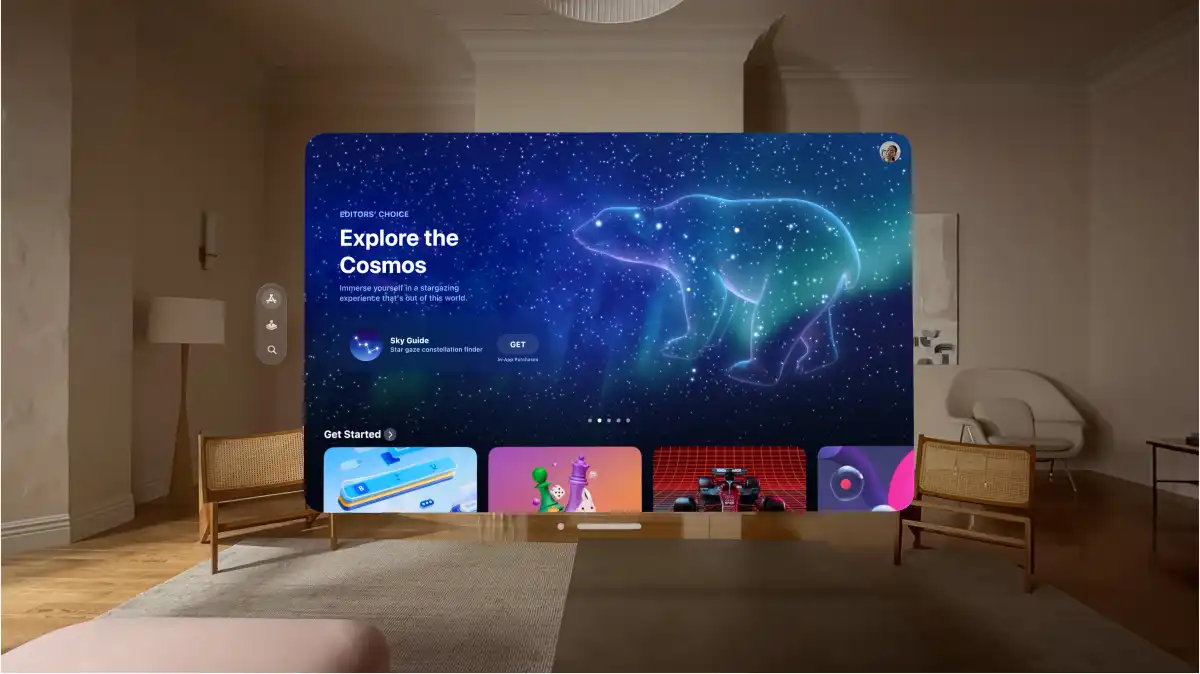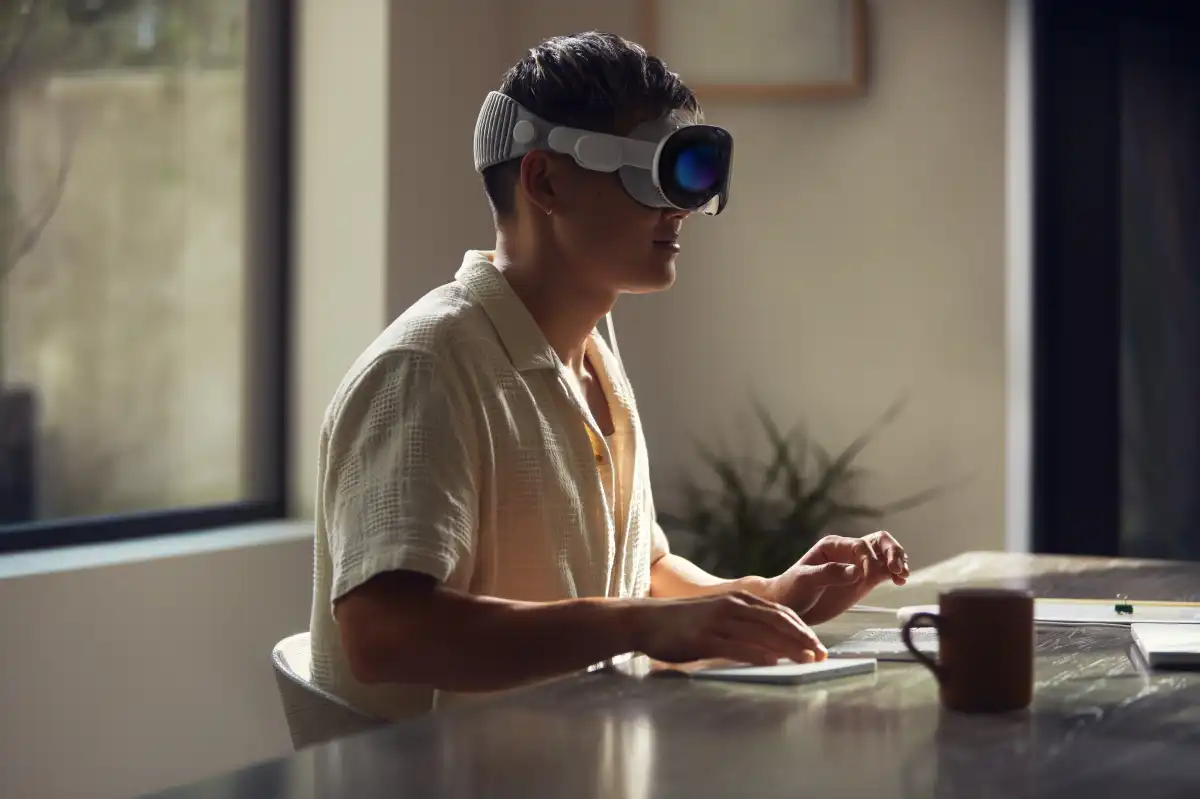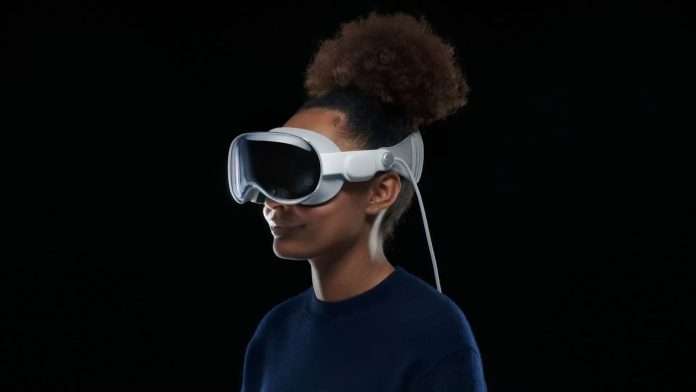We’ve known for years that Apple was developing its first augmented reality headset, and we finally know what it is: the Apple Vision Pro.
Vision Pro is an augmented reality headset that can run all of your favorite iOS and iPadOS apps, as well as some of its own, and has some unique capabilities such as 3D picture and video capturing.
While exceedingly pricey, Apple has finally made the smartphone available to pre-order, albeit with one huge restriction. Here’s all you need know about Vision Pro.
When will the Apple Vision Pro go on sale?
Apple revealed the Vison Pro headset during its WWDC 2023 conference on June 5, 2023, dedicating more than 45 minutes to a detailed look at the technology.
At the time, just a vague early 2024 release date was given. But now, according to an official blog post, it will be on sale in the United States on February 2, 2024.
You can also pre-order one right now on Apple’s website. To do so, you’ll need an iPhone or iPad with Face ID (to do a facial scan) and the most recent version of the Apple Store app.
It’s unclear if the headset will be available for purchase from third-party stores once it is introduced.
In June 2023, Apple announced that availability will be expanded to include other nations later in 2024. But nothing further has been provided on which countries this will be, or when that would happen.
How much will the Vision Pro headset cost?
As one might anticipate, Apple’s debut AR/VR headset is costly.
The Reality Pro will start at $3,499 in the United States, with no other currencies announced as of yet.
The full price has yet to be released, but Apple has highlighted the design’s flexibility and customizability, so expect to pay a premium for different headband alternatives. We do know that Zeiss corrective glasses will be available, with Readers priced at $99 and Prescription Optical Inserts at $149.
However, $3,499 is costly even by VR standards. It costs more than double the $1,499/£1,499 Meta Quest Pro and is comparable to seven Meta Quest 3 headsets for $499/£479 each.

The redeeming grace is that, according to Bloomberg, Apple may be developing a far lower-cost headgear for release in 2024. According to The Information, Apple plans to offer a more inexpensive headset, with ‘affordable’ meaning a price comparable to the Meta Quest Pro.
It is supposed to accomplish this goal by employing lower-tier components than the top-end headset, such as a lower resolution display, less processing power, and maybe the removal of a low-latency audio chipset.
However, Ming-Chi Kuo believes that the inexpensive follow-up is still some time away. He said Apple is working on two successors, “a high-end and a low-end,” but they won’t be available until 2025.
What to expect from Apple’s AR/VR headset
It may be expensive, but the Vision Pro is like no other headset on the market in design or specs.
Design
In terms of general design, the headset looks like a cross between the Meta Quest Pro and a ski mask, with lightweight fabrics and materials that should help maintain a comfortable fit over longer sessions.

The headset’s front is a 3D-curved sheet of laminated glass that is attached to an aluminum alloy frame. This is a basic design, featuring a single button, a computerized spinning crown, and cooling vents.
The light seal, which will be available in “a range of shapes and sizes,” will then contour to your face for a pleasant and exact fit.
Then there are the flexible straps that hold the two audio units, or ‘audio pods’ as Apple refers to them, which you position to keep the speakers near to your ears.

Finally, a 3D knitted headband offers a flexible, ribbed construction for your comfort. It connects to the rest of the headset using a simple click mechanism, making it quick and easy to switch out for a new size or style, much like the Apple Watch. There’s also an adjustable dial for more precise modifications.
Early leaks revealed that the headset was not intended to function with glasses, and that appears to be the case. Apple’s answer is, predictably, expensive: special Zeiss optical inserts that magnetically connect to the headset’s lenses and are available in a variety of prescriptions. There is no news on cost, but don’t expect it to be inexpensive.

Apple has not stated how much the headset weighs, but has admitted that in order to reduce weight, the battery has been removed from the headset and replaced with an aluminum battery pack that is attached via a “supple, woven cable.” Lovely.
The Vision Pro’s design is most notable for the absence of controls. Apple intended for you to manage the headset purely with your eyes, hands, and voice, so there are no potentially complicated controls to learn.
Specs, tracking, and performance
The core of the Vision Pro hardware is one of Apple’s M2 chips – found across its Mac line, including the new 15in MacBook Air revealed at the same time as the headset.
That guarantees significant power, almost certainly more than is found in any rival AR headset right now.
The M2 is paired with a new chip running parallel: R1.

This technology is intended for real-time sensor processing, handling inputs from the headset’s 12 cameras, five sensors, and six microphones while attempting to maintain latency as low as possible – according to the firm, as low as 12ms, which is less than the time it takes you to blink.
All that tracking is also complicated. The cameras are utilized to provide you with a visual feed of the environment as well as to monitor your eye and hand movements for control, and all of the sensors work together to make the headset experience as realistic and immersive as possible.

The exhibits are equally spectacular. The two microOLED display modules, each the size of a postage stamp, have 23 million pixels. That means each eye receives a screen with a greater resolution than a 4K TV, letting you to view 4K material while reading tiny text clearly.
According to an online developer session posted by Apple, the panels can produce HDR and a 90Hz refresh rate. In reality, they may go up to 96Hz, which was chosen because it is a multiple of 24, allowing 24fps material (including most movies) to be presented smoothly and without dropping frames.
What’s most shocking is that the headgear has a third display on the exterior. This curved OLED panel is intended to display your eyes to anyone in the room with you, utilizing a feed sent by cameras inside the headset.
The screen may respond to what you’re doing – for example, becoming opaque while you’re in completely immersive material – or to others in the room, bringing your eyes into view if someone approaches you to converse.

In terms of audio, the two ‘audio pods’ each contain two drivers and employ audio ray-tracing to fine-tune their ‘ambient Spatial Audio’ to your room’s specific size, layout, and materials.
The tradeoff of all this power is battery life. While Apple claims that this headset is “all-day” when hooked into mains power, it only lasts up to two hours on batteries. That is, despite Apple’s marketing, this does not feel like technology that is ready for travel or use in public.
Software and features
So, for all that hardware, what does Vision Pro actually do?
On a basic level, the software, known as visionOS, allows you to launch all of your typical programs on a private display, including multitasking, so you can browse the web or work on a presentation on what appears to be a massive panel.
Apple claims “hundreds of thousands” of iOS and iPadOS applications will be compatible with the hardware, as well as a separate app store for products built particularly for Vision Pro, including a Disney+ app that Disney CEO Bob Iger demonstrated at WWDC.

You can see those applications floating around in the area you’re in (or, technically, a camera feed of that room), or you can replace them with immersive 3D surroundings if you’d rather work in the jungle or an X-Wing cockpit.
The headgear allows you to browse images and view videos while automatically dimming your surroundings. There are also some cool features here: panoramic photographs wrap around you, 3D movies like Avatar are displayed in full force, and custom new Spatial Audio technology provides surround sound.

You can even use the headgear to generate 3D material, but we’re not sure who will. You must wear the headgear while taking 3D images or recording 3D video, lending a dystopian tone to Apple’s promise of documenting treasured family moments in three dimensions.
Naturally, the headset can sync with your iPhone, iPad, or Mac, ensuring that all of your content and accounts are carried across.
More impressively, you can wirelessly stream material from other devices. Simply staring at a MacBook screen may transmit the contents of the display to the headset interface, allowing you to work on files privately while the laptop screen remains blank.
For the most part, the headset is controlled with eye-tracking, gestures, and voice controls – including dictation for messaging – but if you need to get on with proper work you can also connect up a Bluetooth keyboard or mouse for a more traditional experience.

You can even use the headset for FaceTime calls, but there’s a catch: because no one wants to see your face behind a visor, Apple is using eye-tracking technology to create a 3D digital avatar of you that precisely replicates your facial movements.
In terms of security, Apple has developed Optic ID, an eye-scanning technology that detects your iris’ unique patterns. This works for Apple Pay, App Store purchases, and password auto-fill, as expected, and provides useful privacy for users of a shared headset.



